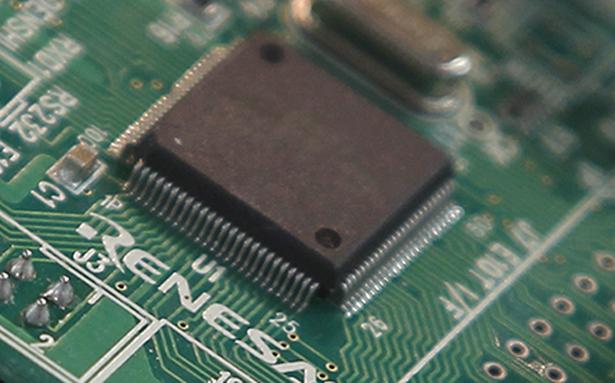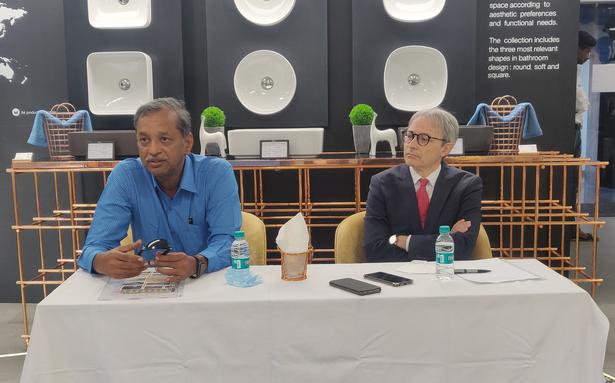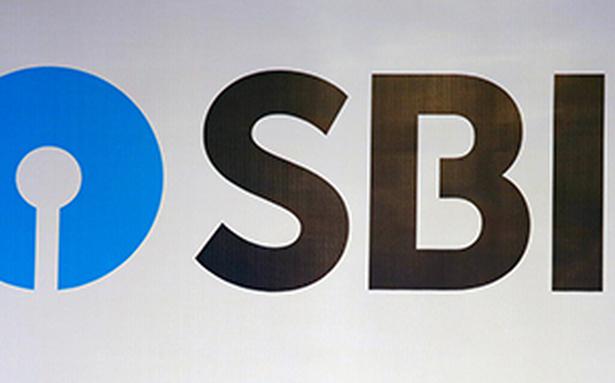About 45% to 54% of the world’s semiconductor neon, which is crucial for the lasers used to make chips, comes from two Ukrainian companies, Ingas and Cryoi, which shut down after the Russian attack
About 45% to 54% of the world’s semiconductor neon, which is crucial for the lasers used to make chips, comes from two Ukrainian companies, Ingas and Cryoi, which shut down after the Russian attack
Ukraine’s two top suppliers of neon, which produce about half of the world’s supply of the key ingredient for making chips, have halted operations as Moscow ramped up its attack on the country, threatening price hikes and worsening semiconductor shortages.
According to Reuters calculations based on figures from the companies and market research firm Techcet, about 45 to 54 percent of the world’s semiconductor neon, which is crucial for the lasers used to make chips, comes from two Ukrainian companies, Ingas and Cryoin. Techcet estimates that global consumption of neon for chip production reached about 540 tons last year.
Both firms have suspended operations as Russian forces escalated attacks on cities across Ukraine, killing civilians and destroying vital infrastructure, according to company officials contacted by Reuters.
The disruption casts a shadow over global production of chips, which are already in short supply after the coronavirus pandemic spurred demand for cellphones, laptops and later cars, forcing some companies to curb production.
While estimates of the amount of neon supplies chipmakers are stockpiling vary widely, production could take a hit if the conflict drags on, according to Angelo Zino, an analyst at CFRA.
“If inventories are depleted by April and chipmakers don’t have orders in other regions of the world, it likely means further constraints on the broader supply chain and an inability to manufacture the end product for many key customers,” he said.
Before the invasion, Ingas was producing 15,000 to 20,000 cubic meters of neon per month for customers in Taiwan, Korea, China, the United States and Germany, with about 75% going to the chip industry, Nikolay Avdzhy, the company’s chief commercial officer, said in an email to Reuters.
The company is based in Mariupol, which is besieged by Russian forces. On Wednesday, Russian forces demolished a maternity hospital there in what Kyiv and Western allies described as a war crime. Moscow said the hospital was no longer functioning and had been occupied by Ukrainian militants.
Cryoin, which produces about 10,000 to 15,000 cubic meters of neon a month and is based in Odessa, halted operations on Feb. 24 when the attacks began to keep employees safe, according to business development director Larissa Bondarenko.
She said the company would not be able to fulfill orders for 13,000 cubic meters of neon in March unless the violence stopped. She said the company could survive at least three months with the plant closed, but warned that damaging the equipment would put more strain on the company’s finances and make it difficult to resume operations quickly.
She also said she wasn’t sure if the company could access additional raw materials to make neon.
Taiwan’s Economy Ministry said in a statement to Reuters that Taiwanese firms have already made advanced preparations and have “safety stocks” of neon, so it sees no problems in the supply chain in the short term.
Taiwan’s central bank made similar comments earlier on Friday.
Ukrainian neon is a by-product of Russian steel production. The gas, which is also used in laser eye surgery, is also produced in China, but Chinese prices are steadily increasing.
Ms Bondarenko said prices, already under pressure in the wake of the pandemic, have risen by as much as 500% since December. According to a Chinese media report citing Chinese commodity market information provider biiinfo.com, the price of neon gas (99.9% grade) in China had quadrupled from 400 yuan/cubic meter in October last year to over 1,600 yuan/cubic meter by the end of February.
Neon prices rose 600% in the run-up to Russia’s annexation of Crimea from Ukraine in 2014, according to the US International Trade Commission.
Companies elsewhere could start neon production, but it would take nine months to two years to ramp up, according to Richard Barnett, chief marketing officer for Supplyframe, which provides market intelligence to companies in the global electronics industry.
However, CFRA’s Angelo Zino noted that companies may not be willing to invest in this process if the supply crunch is seen as temporary.




